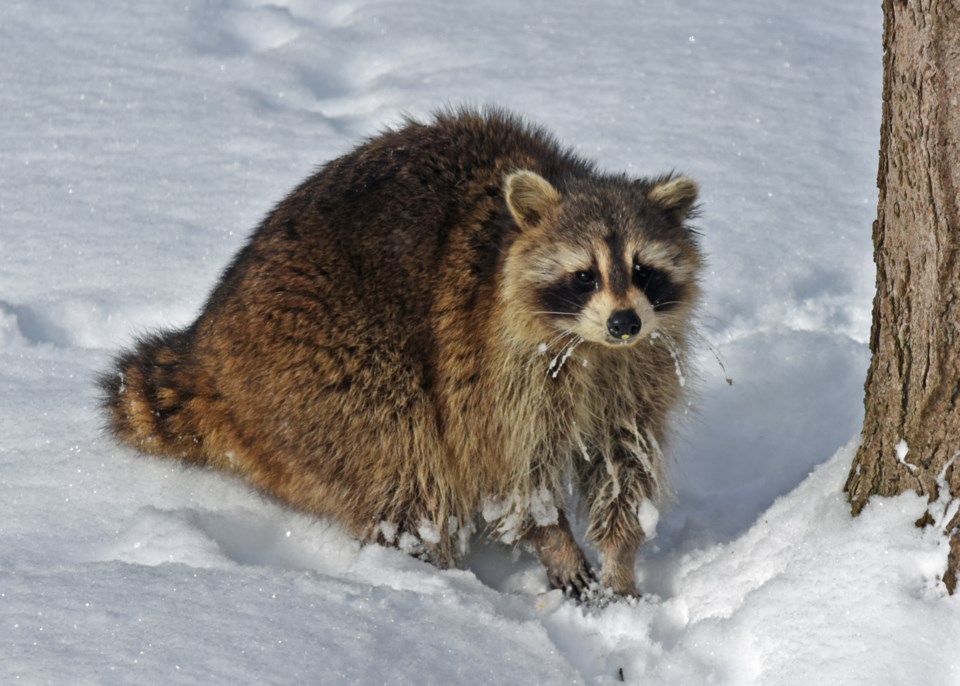If one had to pick a theme for this season, I suppose “Winter… Interrupted” would be as good a choice as any. Having just come out of two weeks of very warm temperatures and lots of melting snow, it certainly feels like the calendar has been shifted a month ahead.
Maple trees are being tapped, red-winged blackbirds are returning, tree buds are opening and some early wildflower stems are pushing upwards ... in mid-February!
Should you live in North Carolina or the south half of Pennsylvania, well OK, situation normal. But we are in the Great Lakes region of Ontario and February is ‘supposed’ to be three weeks of minus 20 on top of a metre of fallen snow. Not this year!
This lack of a winter vibe has hit our local tourism quite hard, with snowmobile trails yet to open, ice fishing being restricted in many places to occurring just a few feet offshore, and pond hockey on lake ice relegated to just a dream. Certainly not out normal wintertime experience.
The local wildlife species are also a perplexed as to the weather pattern. Once upon a time there were three hard choices for wildlife each autumn: migrate and get the heck out of here; hibernate and “see y’all next spring”; or adapt by growing thick fur and changing the diet from green leaves to hard nuts and dried berries.
Each of these winter survival options can be further divided down to more species specific choices. Migration is generally thought upon as the great exodus, mainly conducted by birds but a few insects do so as well. However, some migrations are done so only to avoid the worst of winter, and when ‘the worst’ does not materialize, and short shift may all that is required.
This mini-migration can be observed in pine grosbeaks, Bohemian waxwings and snowy owls, and are often labelled as an ‘irruption’ into southern Ontario. As soon as the weather warms enough to make living in the north country bearable, off they go.
Hibernation could be described as the big sleep, with the animal’s metabolic functions reducing to almost zero. The trick to a successful hibernation was to eat heartily in the autumn, get a solid layer of insulating and nourishing fat built up, and drift away to slumberland for four or five months. However, this state of dormancy differs between species.
Black bears hibernate but only enter into a light sleep called a torpor. They can and will wake up from time to time, sometimes to give birth and other times just for a quick drink of water. This recent sunny and warm spell was an early wake-up call for a few local denning bears.
Ground hogs and jumping mice do indeed to all out for a long sleep. They slow their breathing and heart rate is almost just about pretty near full stop. It takes a very prolonged period of warming to wake these guys up. Kinda like getting teenagers out of bed.
Yet another form of hibernating is called brumation, and it performed by cold-blooded critters such as snakes. While actually awake all winter, they do not eat as their digestive system has shut down. Garter snakes and northern water snakes will often gather underground in large numbers, and just chill out as a big ball of snakes.
Our summer resident the little brown bat does a combo migrate and hibernate, leaving the farmhouses and outbuilding to join together for the winter in caves and deep crevices in the rocks.
Many species of frogs and turtles dig into the mud strata of a local pond and remain very, very still and quiet, allowing oxygen to pass through their skin, thus ensuring survival. A few frogs simply hide under a log in the forest, their bodied producing a protein that acts like anti-freeze; although frozen solid they still function in this state of brumation.
But what about this year, with our less than normal warm weather pattern? Amazingly, most of the hibernating species have the ability to go back to sleep, but having been interrupted and awakened, their energy reserves may deplete sooner than hoped for. And so they hope for a warm early spring.
Plants are having a real challenge adapting to these new wintertime conditions. Many were producing blossoms in late fall, fooled by the lasting warm weather into thinking it was spring. Several shrubs and saplings around our place have broken open their leaf buds, again being fooled about the growing conditions.
Of course this milder wintertime does allow certain pests to survive, thus moving their range further north. Forest managers fear a number of insects, fungi and bacteria will be moving northwards, hitting our local trees now that we are acting like North Carolina.
So if you see a raccoon, skunk, bear or chipmunk out and about these days, understand that it is not too unusual of an event, although with enough warm winters in a row they may begin to adapt to this new climate by sleeping less and marauding more.
And now I have to go outside to rearrange the birdfeeders to their proper positions ... our local raccoon has been up looking for a midwinter snack.



